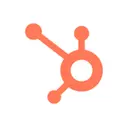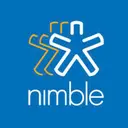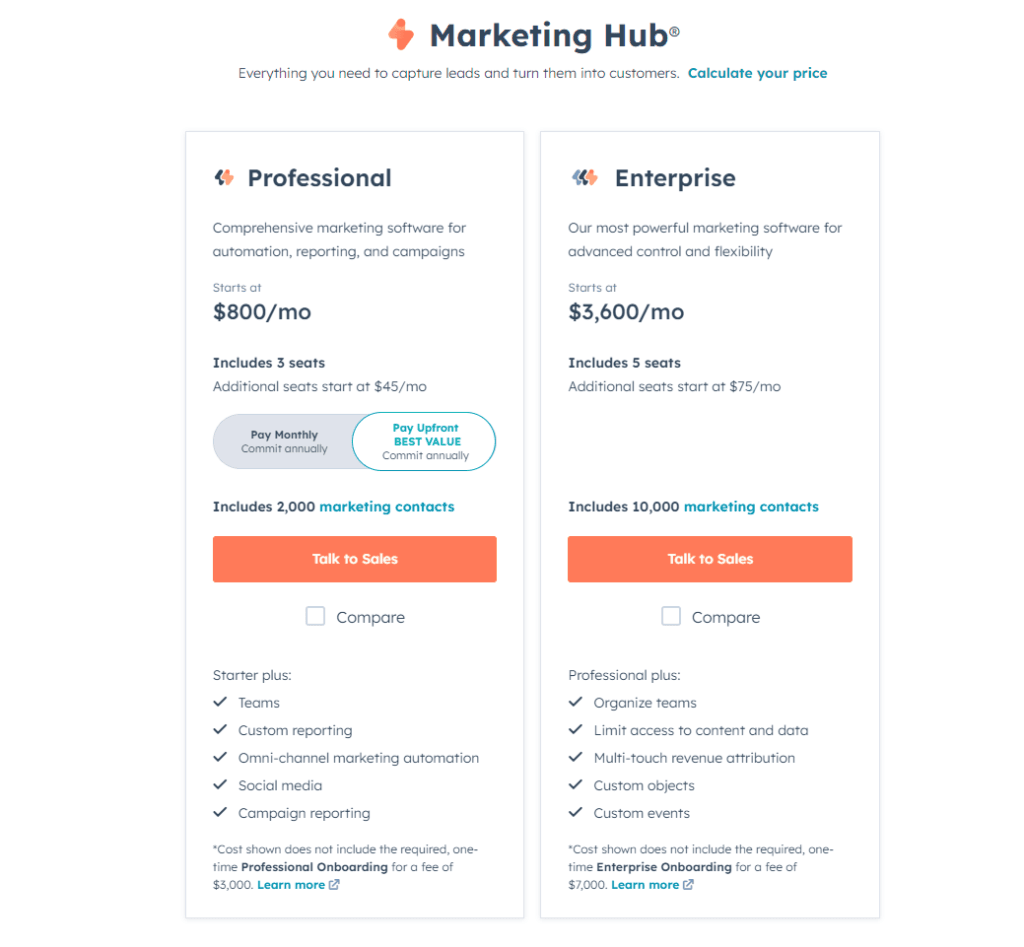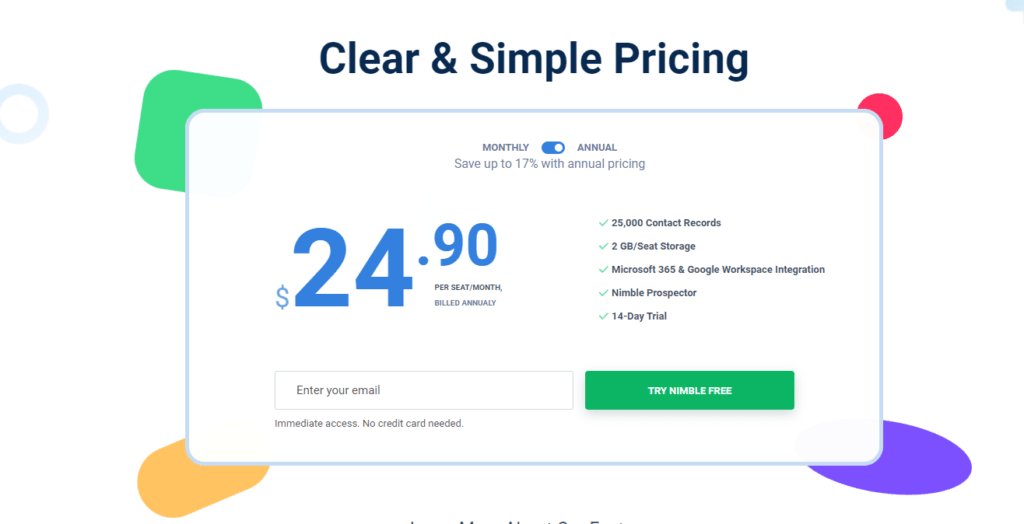Choosing the right CRM (Customer Relationship Management) tool is akin to finding the perfect partner in a dance. It needs to match your rhythm, anticipate your moves, and support your performance seamlessly. Today, we’re spotlighting two partners in the CRM dance floor: HubSpot CRM and Nimble CRM. Both bring their unique styles and moves, but which one will sync perfectly with your business’s tempo? Let’s glide through the details.
| HubSpot CRM | Nimble CRM |
|---|---|
 |  |
| G2 Score -4.4 out of 5 | G2 Score -4.5 out of 5 |
| TrustRadius Score -8.5 out of 10 | TrustRadius Score -7.4 out of 10 |
Ease of Use and User Experience
In the bustling ballroom of business operations, the last thing you want is a CRM that steps on your toes. A user-friendly interface, intuitive navigation, and a smooth learning curve are essential. So, how do HubSpot CRM and Nimble CRM fare when it comes to ease of use and providing a stellar user experience?
HubSpot CRM: The Graceful Leader
HubSpot CRM prides itself on leading users through the dance of CRM with elegance and ease. Its interface is designed with clarity and simplicity in mind, ensuring that even the most technophobic team member can find their rhythm quickly. The dashboard offers a panoramic view of your sales pipeline, marketing efforts, and customer interactions, all neatly organized and accessible with a few clicks.
But HubSpot doesn’t just lead and expect you to follow; it teaches you the steps. With HubSpot Academy, users have access to an extensive library of courses, tutorials, and resources. These are not just about mastering the CRM; they cover a wide range of sales, marketing, and service strategies, helping your team to enhance their skills and knowledge as they use the platform.
Customization in HubSpot CRM is akin to choreographing your dance routine. It offers flexible tools that allow you to tailor the platform to your business’s unique processes and needs, from customizing deal stages to creating bespoke email templates, all without needing a background in IT.
Nimble CRM: The Social Savant
Nimble CRM takes a slightly different approach, emphasizing social media integration and networking as the core of its user experience. It’s like the social butterfly of CRMs, effortlessly mingling data from your contacts’ social media profiles into one comprehensive contact record. This focus on social integration makes Nimble particularly adept at providing insightful context about your contacts, enriching customer interactions with personal touches and fostering stronger relationships.
Nimble’s interface is clean and intuitive, with a dashboard that highlights your to-dos, events, and key engagement opportunities. It might not offer the same level of customization as HubSpot, but it shines in its simplicity and the ease with which users can start meaningful conversations with their contacts.
Where Nimble excels in user experience is in its browser extension, Nimble Prospector. This tool allows you to gather and update contact information from across the web and social platforms directly into your CRM, making it incredibly efficient for networking and building out your contact list on the go.
Pricing and Scalability
Comparing HubSpot CRM and Nimble CRM. Understanding how each platform aligns with your financial constraints and growth ambitions is essential for making an informed decision.
HubSpot CRM: Generously Free with Scalable Options

HubSpot CRM starts strong with a compelling offer: a robust free plan that’s more than just a teaser. It’s designed to cater to small businesses or startups looking to harness the power of CRM without the upfront investment. This free version includes essential features like contact management, email tracking, and deal pipelines, making it an attractive entry point.
As businesses grow, HubSpot’s pricing model accommodates this evolution with its tiered plans across the Sales Hub, Marketing Hub, Service Hub, and CMS Hub. These plans are designed to scale with your business, offering more advanced features as your needs become more complex. However, as you integrate more hubs and move to higher tiers, the costs can add up, making it crucial for businesses to assess which features are truly necessary for their operations.
Nimble CRM: Simple and Straightforward Pricing

Nimble CRM takes a more straightforward approach to pricing, offering a single paid plan that encompasses all its features. This simplicity can be a breath of fresh air for businesses looking for transparency and predictability in their CRM investment. The plan includes access to Nimble’s core functionalities, including contact management, sales and marketing automation, and its standout social media integration capabilities.
Nimble’s pricing model is designed to be scalable, with costs primarily based on the number of users, making it easier for small to medium-sized businesses to adopt and grow with the platform. While it may not offer a free tier like HubSpot, its pricing is competitive, especially considering the comprehensive set of features included.
Customer Support and Training
The level and quality of support and training provided by a CRM provider can significantly impact your team’s ability to utilize the CRM effectively. It’s about more than just having access to help when things go awry; it’s about continuous learning and maximizing the value of the CRM to your business operations.
HubSpot CRM: Comprehensive Support and Extensive Educational Resources
HubSpot is renowned for its exceptional customer support and vast array of educational resources. The platform ensures that users are not left in the dark when it comes to navigating its features or solving potential issues. Support is accessible through various channels, including email, phone, and live chat, ensuring that help is readily available when needed.
What sets HubSpot apart in this domain is the HubSpot Academy. This online learning platform is a treasure trove of resources, offering free courses, certifications, and training materials not just on how to use HubSpot’s tools but also on a wide range of marketing, sales, and service topics. This commitment to user education helps businesses not only leverage the CRM to its fullest potential but also grow their overall expertise in digital business practices.
Nimble CRM: Efficient Support Tailored to Social Business
Nimble CRM, while smaller in scale compared to HubSpot, offers targeted and effective customer support. Users have access to email and social media support, along with a comprehensive help center that includes articles, guides, and FAQs. Nimble also provides personalized support through its VIP package, which includes onboarding assistance and ongoing support for businesses looking for a more hands-on approach.
In terms of training, Nimble focuses on providing straightforward, practical resources that help users quickly get up to speed with the CRM’s features. While it may not offer the same breadth of educational content as HubSpot Academy, Nimble ensures that users have access to the essential information needed to effectively manage their contacts and sales processes, particularly in a socially driven business environment.

Related: Check out our free SEO suite

Integration and Ecosystem Compatibility
In our interconnected digital world, a CRM should not be an island but a hub that seamlessly connects with various other tools and services your business relies on, from email marketing platforms to customer service solutions and everything in between.
HubSpot CRM: A Central Hub in a Vast Ecosystem
HubSpot CRM is designed to be the core of a comprehensive ecosystem, not only through its native integration with the HubSpot suite of marketing, sales, and service tools but also through its compatibility with a wide array of external applications. The HubSpot App Marketplace is a testament to this, featuring thousands of integrations across various categories, enabling businesses to connect HubSpot CRM with their preferred tools and services, enhancing functionality and streamlining workflows.
What makes HubSpot stand out in this arena is the depth of integration offered. It’s not just about data sharing; it’s about creating a unified workflow that enhances productivity and provides a 360-degree view of customer interactions. This makes HubSpot CRM an excellent choice for businesses looking for a solution that can act as the nerve center of their operations, ensuring all tools and platforms are interconnected.
Nimble CRM: Nimble Integration with a Focus on Social Connections
Nimble CRM takes a slightly different approach to integration, with a strong emphasis on social media platforms. It shines in its ability to bring together social media insights and contacts into a cohesive CRM experience. Nimble’s integration capabilities extend beyond social media, though, with support for a variety of business tools including email, calendar applications, and more, facilitated through its Nimble Prospector browser extension.
While Nimble may not offer the same breadth of integrations as the HubSpot App Marketplace, it provides focused and effective connections with key platforms, particularly for businesses that prioritize social media engagement and networking. Nimble ensures that users can easily capture and enrich contact information from across the web and social channels, making it a powerful tool for businesses that leverage social insights for sales and marketing.
Analytics and Reporting
The ability of a CRM to not just gather but also intelligently analyze and present data can transform how you understand your customer interactions, sales performance, and overall business health. Let’s see how HubSpot CRM and Nimble CRM stack up in providing actionable insights through analytics and reporting.
HubSpot CRM: Deep Insights at Your Fingertips
HubSpot CRM excels in offering comprehensive analytics and reporting features that cater to various aspects of your business, from sales and marketing to customer service. The platform provides a plethora of customizable dashboard options and reporting tools that allow you to drill down into your data, identify trends, and uncover insights that can drive strategic decisions.
One of the standout features of HubSpot CRM is its ability to integrate data from its entire ecosystem, including marketing emails, sales calls, and customer service tickets, into its analytics. This integration offers a holistic view of your customer journey, enabling you to assess your funnel’s effectiveness, track customer engagement, and measure the ROI of your marketing campaigns with precision.
Additionally, HubSpot’s reporting tools are designed to be user-friendly, ensuring that even those without a background in data analysis can generate meaningful reports and gain insights from their data. This democratization of data analysis is a significant advantage for businesses looking to empower their teams with data-driven decision-making capabilities.
Nimble CRM: Streamlined Reporting with a Social Twist
Nimble CRM, while offering a more focused set of analytics and reporting features compared to HubSpot, provides valuable insights, especially in the context of social CRM. Nimble’s strength lies in its ability to aggregate social media interactions and engagement data, offering a unique perspective on how social media activities influence customer relationships and business outcomes.
Nimble’s reporting tools allow you to track the effectiveness of your social engagement and networking efforts, monitor sales pipeline performance, and understand contact interactions over time. While its analytics may not be as deep or comprehensive as HubSpot’s, Nimble provides essential reporting capabilities in a user-friendly format, making it accessible for businesses focused on leveraging social insights.
Conclusion
In our comprehensive comparison of HubSpot CRM and Nimble CRM, we’ve navigated through several key areas that are crucial when selecting the best CRM tool for your business. From ease of use and user experience to pricing and scalability, integration and ecosystem compatibility, and finally, analytics and reporting, both CRM platforms offer distinct strengths tailored to different business needs and priorities. HubSpot CRM emerges as a powerful, all-encompassing solution designed for businesses seeking a comprehensive CRM tool that not only manages customer relationships but also integrates seamlessly with sales, marketing, and customer service. Nimble CRM, on the other hand, shines with its focus on social CRM, offering streamlined and efficient tools for businesses that prioritize social media engagement and networking.
READ NEXT:
- Branding for the Entertainment Industry: Crafting Memorable Experiences and Stories
- The Importance of GDPR Compliance in Email Marketing
- 45+ Productivity Apps for Entrepreneurs (2023 Edition)
- Instapage vs Pagewiz: The Best Landing Page Tool for You
- Gist vs BenchmarkONE: The Best Email Marketing Tool for You
- 9 Best Marketing CRM Software (For You): In 2023
- 19+ Top Customer Relationship Management (CRM) Software: What’s Best?





















